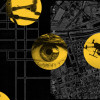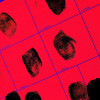Cops Used DNA to Predict a Suspect’s Face—and Tried to Run Facial Recognition on It

In 2017, detectives working a cold case at the East Bay Regional Park District Police Department got an idea, one that might help them finally get a lead on the murder of Maria Jane Weidhofer. Officers had found Weidhofer, dead and sexually assaulted, at Berkeley, California’s Tilden Regional Park in 1990. Nearly 30 years later, the department sent genetic information collected at the crime scene to Parabon NanoLabs—a company that says it can turn DNA into a face.
Parabon NanoLabs ran the suspect’s DNA through its proprietary machine learning model. Soon, it provided the police department with something the detectives had never seen before: the face of a potential suspect, generated using only crime scene evidence.
The image Parabon NanoLabs produced, called a Snapshot Phenotype Report, wasn’t a photograph. It was a 3D rendering that bridges the uncanny valley between reality and science fiction; a representation of how the company’s algorithm predicted a person could look given genetic attributes found in the DNA sample. The face of the murderer, the company predicted, was male. He had fair skin, brown eyes and hair, no freckles, and bushy eyebrows. A forensic artist employed by the company photoshopped a nondescript, close-cropped haircut onto the man and gave him a mustache—an artistic addition informed by a witness description and not the DNA sample.









































































